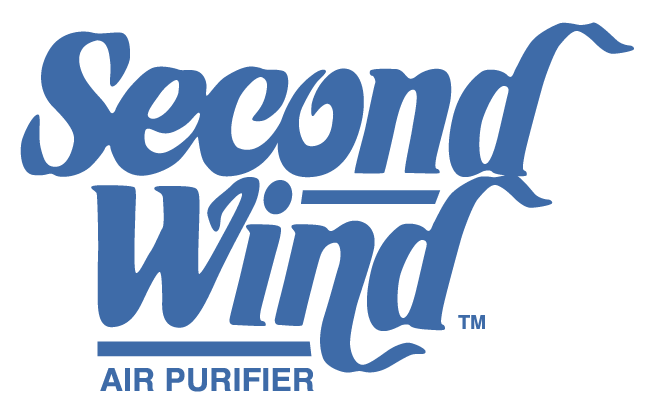Humidifier Help Topics
For Tech Support call (866) 476-5101. Be sure to have your model and serial numbers, along with the date of installation ready.
Technology & Operation
- How does a humidifier work?
- Why would I want to install a humidifier?
- Which humidifier is best for me?
- Will a humidifier harm my home?
- What range of humidity is ideal?
- What is humidity load?
- Where should the damper position be?
- How does water conductivity affect the performance of my steam humidifier?
- How do I get more water in my cylinder so that it produces more humidity?
Maintenance
- How often do I need to change the vapor pad?
- Does my humidifier require other maintenance?
- How do I change my steam cylinder?
- Can't I simply clean my Vapor Pad instead of replacing it?
- Where do I find my model number?
- How do I change my Vapor Pad®?
- I have a recirculating pump. Does it need maintenance?
Miscellaneous
- I already have a GeneralAire® 1042 Humidifier installed, but have a 4,000 square foot home. Should I upgrade to a larger humidifier?
- What is the "OFFSET" mode on the GFX3?
- How do I ensure the greatest performance of my Humidifier?
- How often does the water in my steam humidifier drain? Why does it do that?
- Why is so much water going down the drain?
- Why is water leaking from the bottom of my DS25 steam humidifier after I've replaced my cylinder?
How does a humidifier work?
There are different types of humidifiers:
- GeneralAire® Steam Humidifiers: The GeneralAire® Steam Humidifier is an electrode humidifier. Steam humidification is produced by passing electric current through water inside a steam cylinder between highly-conductive metal electrodes. Steam output is directly proportional to the conductivity of the water between clean electrodes.
- GeneralAire® Evaporative Humidifiers: Water is distributed through a water distribution trough resting on top of a Vapor Pad® inside the humidifier. The Vapor Pad® then becomes thoroughly saturated with water. As heated air from the furnace passes through the water-soaked Vapor Pad® the water evaporates and creates humidity. The humidity is moved by the furnace blower motor through the duct system and is distributed to the living quarters of the home.
- GeneralAire® Fan-Assist Humidifiers: Similar to evaporative humidifiers, but with a fan inside that pulls heated air from the furnace through the Vapor Pad® to enhance the evaporative process.
Why would I want to install a humidifier?
For many reasons: Since the air in your home is always trying to reach its saturation point, it will absorb water wherever it can; from the bodies of you and your children, your pets, your furniture and even your house plants. As a result:
- Dry skin, throat and nasal passages leave you more susceptible to physical discomfort, colds, flu and even infection.
- Dry air causes dry, itchy skin.
- Dry air causes cracks in expensive woodwork of floors, door and window trim, artwork, musical instruments, and furnishings.
- Annoying (and sometimes painful) static electricity (caused by dry air) can damage computers, VCR’s and other electronic equipment, requiring expensive repair.
- Dry air causes gaps in window & door frames, letting cold outdoor air in; causing you to turn up the heat and increasing your heating bills!
- Even in newer, tighter homes dry air can feel chillier, again causing you to turn up your thermostat. For example, 68°F at 40% relative humidity feels just as warm as 74°F at 20% humidity. Setting your thermostat back by as little as three degrees can reduce annual heating bills by as much as 5%.
Which humidifier is best for me?
We recommend contacting your local certified HVAC contractor, as they will be able to make recommendations for your home based on its age, size & construction. Overall, you can begin to understand which model might be best for your home using the following:
First, determine how much humidification your home needs to maintain a 40-60% humidification level, known as Gallons Per Day (GPD):
Use the 3-step formula below or the Humidity Calculator Tool on this site!
Step One: Calculate the Total Cubic Feet of Home
- Total Home Square Footage
- X Average Ceiling Height
Step Two: Calculate the Load (lbs/hr)
- Total Cubic Feet X Desired Condition Factor (Table Below)
- X 1.05 For Each Fireplace

Step Three: Calculate Gallons Per Day (GPD)
- Gallons Per Day = Load (lbs/hr) X 2.88
Then, Select Your Unit
Once you have calculated your gallons per day you can then find models that are designed to process that amount of water / accommodate your size of home.
Keep in mind these numbers can vary based on numerous factors, including home construction, the presence and amount of woodwork, if you have a humidor or wine cellar, the presence of fireplaces, the number of floors and more. Work closely with a licensed contractor to determine the best selection for your home.
- Steam Model 5500 = 15 GPD (115 V) or 28.5 GPD (230V) and up to 5,500 Sq. Ft.
Gallons Per Day ratings for the following models are based on 120° plenum temperature.
- Evaporative Models 3200A & 3200M = 12 GPD / Up to 3,200 Sq. Ft.
- Evaporative Models 4200A & 4200M = 17 GPD / Up to 4,200 Sq. Ft.
- Evaporative Model 1042LH = 17 GPD / Up to 2,800 Sq. Ft.
- Evaporative Model 1099LHS = 19 GPD / Up to 3,000 Sq. Ft.
- Fan-Powered Model 1137 = 19 GPD / Up to 3,000 Sq. Ft.
- Fan Powered Models 1000A & 1000M = 18 GPD / Up to 3,000 Sq. Ft.
You might also install more than one humidifier if your home has more than one HVAC system. Many people install a humidifier with each system to reduce the work load on each and more evenly distribute humidification throughout the home.
Will a humidifier harm my home?
A humidifier is a tool that helps you keep your home within the optimal humidity level (40-60% RH). If you keep your humidity levels within that range, you and your home will not suffer the effects of improper humidity levels.
Why is so much water going down the drain?
All of the GeneralAire® evaporative humidifiers incorporate a self-flushing action that flushes down the drain many of the mineral deposits left on the Vapor Pad® from the evaporation process. This minimizes the amount of maintenance required.
What range of humidity is ideal?
Research shows that 35% – 55% relative humidity is ideal. Outside this range, your risk of being adversely affected increases.
Too Low:
- Skin, sinuses, and nasal passages dry, increasing the risk of infection, flu, colds
- Wood dries, causing cracks and damage to floors, windows, expensive musical instruments and artwork
- Annoying static shocks increase in frequency
Too High:
- The dust mite population increases
- Insect populations attracted to moisture increase
- The danger of mold and mildew growth increases, causing adverse effects on your health
- Woodwork may warp
- Metal may rust

What is Humidity Load?
Humidity Load, also known as Gallons Per Day, represents the amount of water a humidifier must process to properly humidify your home. Humidity load has a direct impact on the life of a humidifier, and a steam cylinder within the steam humidifier. When properly sized to match the square footage of a home, a humidifier will rarely be required to run at full capacity, extending the life of the humidifier.
Also, water levels inside a cylinder remain lower and buildup of minerals on the entire length of the electrodes takes longer. Thus, the life of your cylinder is greatly enhanced. Conversely, extraordinary installations that require constant operation at full capacity reduce cylinder life. The water level in the cylinder stays generally much higher, and the electrodes become completely insulated by mineral buildup more quickly. Installations like this may result in cylinder life of less than 1000 hours.
Where should the damper position be?
- During the winter (when the humidifier is used) the damper should be turned to: Open, High, or Winter
- During summer months, turn the dial to: Closed, Low, or Summer
How often does the water in my steam humidifier drain? Why does it do that?
The water in your steam unit will drain automatically after 120 hours to remove mineral sediment on the bottom of the cylinder.
How does water conductivity affect the performance of my steam humidifier?
Prior to the installation of a steam humidifier, one would ideally check water conductivity using a conductivity tester. You can also have your water tested for conductivity by the city or a local contractor.
Steam electrodes inside the steam cylinder require conductivity in order to pass electricity from one electrode to the other. The presence of minerals (or particulates) is measured in microSiemens per centimeter (µs/cm) and a minimum of 125 µs/cm is required for a steam humidifier to deliver steam.
- 125 to 400 µs/cm indicates low conductivity
- 401 to 1250 µs/cm indicates regular conductivity
In addition, the following water types are not acceptable:
- Softened water, as this will lead to foam, electrode corrosion and greatly shortened cylinder life.
- Water containing disinfectants or corrosion inhibitors, as these are potential irritants
- Industrial water, boiler water or water from cooling circuits.
- Any potential chemically or bacteriologically contaminated water.
- Heated water.
- Water with silica deposits.
Overall the humidifier must be supplied with the following water characteristics:
- Pressure between 20psi and 110psi; or 0.1 and 0.8 MPa (1 and 8 bar)
- Temperature between 33° F and 104° F; or 1° C and 40° C
- Flow rate minimum of 0.45 L/min or 0.21 gpm
- Hardness no greater than 40° fH (equal to 400 ppm3 of CaCO),
- Conductivity from 125 to 1250 µS/cm
- Absence of organic compounds
When in doubt, contact GeneralAire® for help toll free: (866) 476-5101 or contact your local contractor.
How often do I need to change the vapor pad?
We recommend replacing your Vapor Pad® at the start of each heating season and depending on your humidity demand, again mid-season. Minerals build up on the vapor pad over time, which in turn:
- Reduces the pad's ability to absorb water
- Prevents the warm air from flowing through the pad (Warm air moving though the water-soaked pad causes the water in the pad to evaporate. It is this process that delivers moisture throughout your home via the home's duct system).
Does my humidifier require other maintenance?
Steam humidifiers: In addition to replacing the cylinder, you should check:
- Plumbing components for sediment buildup. Remove with combination of vinegar and water (page 41 of installation manual).
Evaporative and fan powered humidifiers: In addition to replacing the Vapor Pad®, check:
- Distribution trough, drain pan, drain spout, drain hose, and other areas for sediment buildup. Remove with combination of vinegar and water.
Click here to visit our video library to view videos demonstrating maintenance on your humidifier.
How do I change my steam cylinder?
Model 5500: (Found on page 40 of the 5500 manual)
- Completely drain the cylinder by pressing and holding the "drain" button.
- IMPORTANT: Turn the humidifier off and disconnect the main power.
- Remove the cover by unscrewing the center bottom screw. Lift cover off top hinges.
- Disconnect the electrical connections at the top of the cylinder by simply pulling them off.
- Loosen the steam hose clamp and remove the steam hose.
- Flip up the cylinder holding bracket and lift the cylinder out of the unit.
- Install a new O-ring, if necessary.
- Install the new cylinder by performing the above instructions in reverse.
Discontinued Elite Models: These instructions can also be found on page 22 of the Elite Steam Installation / Owner's Manual.
- Completely drain the cylinder by pressing and holding the "drain" button.
- IMPORTANT: Turn the humidifier off and disconnect the main power.
- Remove the cover.
DS Models: Remove steam hose from cylinder, flip up the cylinder holding bracket.
RS Models: Remove 2 bolts of the embedded fan, flip up cylinder holding bracket. - Disconnect the distributor from the cylinder and lift the cylinder out of the unit.
- Disconnect the electrical connection from the top of the cylinder, and re-connect to the NEW cylinder.
- Install the new cylinder, performing these steps in reverse.
For your safety and the longevity of your steam humidifier, we recommend all installations, maintenance and repairs be performed by a licensed contractor only.
Can't I simply clean my Vapor Pad instead of replacing it?
The evaporator pad incorporates a special coating that absorbs water to be humidified by the furnaces' heated air. While very efficient, it is also fragile. If you subject the pad to cleaning, you usually remove much of the coating. The pad becomes unable to hold water and produce humidity. The result is reduced output and increased water consumption.
For your humidifier to work as designed, you must replace the evaporator pad each heating season.
Where do I find my model number?
How do I change my Vapor Pad®?
Our website contains a library of videos demonstrating how to change the Vapor Pad® on each of our units. Click here to be taken to our video library. Find your model and learn how to replace the vapor pad.
I already have a GeneralAire® 1042 Humidifier installed, but have a 4,000 square foot home. Should I upgrade to a larger humidifier?
The 1042 is designed for homes up to 2,800 sq. feet, but if you have two furnace systems for your size home, you can place a 1042 on each system.
We also recommend that you contact a local contractor to discuss your options.
What is the "OFFSET" mode on the GFX3?
The GFX3 offset mode is used to match the readings of your new GFX3 to other controls in the home (humidity level, outdoor temperature and indoor temperature.
Example: Your GFX3 reads the inside humidity as 25%, but another humidistat inside the home reads 29%. Use the offset feature in the GFX3 to match the other reader. You now have consistency throughout your home.
How do I ensure the greatest performance of my Humidifier?
Perform maintenance as recommended; at minimum annually.
Why is water leaking from the bottom of my DS25 steam humidifier after I replaced the cylinder?
This often occurs after a steam cylinder replacement of our Elite Steam Models. We have found that sometimes, when a customer lifts the old cylinder out of the unit, the red O-ring (also called a gasket) and plastic bushing may lift out as well (see photo below).


Customers may not realize these pieces fell out, or they didn't realize they needed them, or they threw the pieces away because they thought the they were automatically part of the new cylinder.

DO NOT throw the plastic bushing away. Together, the plastic bushing and red O-ring assure a tight seal for the new cylinder-to-pump connection, so be sure to carefully replace these before installing the new cylinder. (A new red O-ring will accompany your replacement cylinder.) If you have already lost them or discarded them, call our offices at (866) 476-5101 to order replacement pieces. Do not run your humidifier until these pieces are in place.
I have a recirculating pump. Does it need maintenance?
Yes, each fall, at the same time you replace your vapor pad. Do the following:
- Remove power to the pump.
- Add one or two drops of motor oil to the two ports (small gold tubes of image below).
That's it!

How do I get more water in my cylinder so that it produces more humidity?
This is a reasonable question since electrodes inside the steam cylinder require the presence of minerals to pass electricity from one electrode to the other and boil the water (called conductivity). One might conclude that to have the entire cylinder full of water would result in greater conductivity and higher output.
Maximum output, however, does not require a full cylinder. It requires clean electrodes.
GeneralAire® cylinders fill water only a portion at a time. As minerals coat the electrodes and cylinder walls, more water is introduced to find clean electrode surfaces for humidity production. This gradual fill of water helps the cylinder to last longer. Over time the entire cylinder inside becomes coated and must be replaced.








